Description
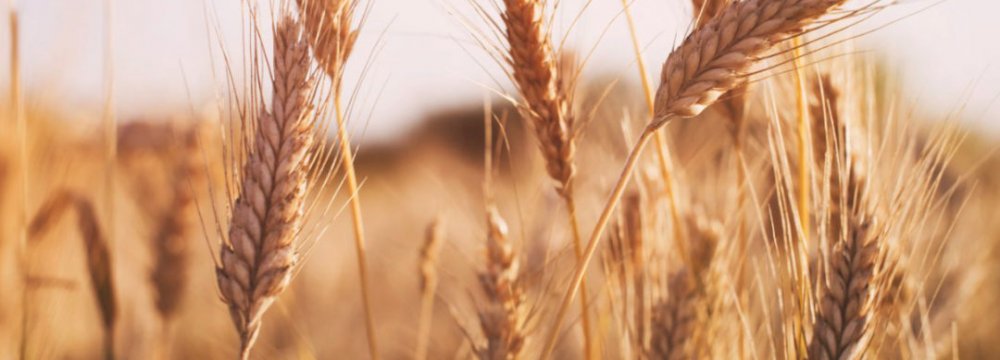
Disclaimer: Copyright infringement not intended.
Context
- Egypt has agreed to buy Indian wheat and plans to import at least three million tonnes (mt) over the next few months.
Wheat
- Wheat is a Rabi Crop grown between September and December and harvested between February and May.
- The total area under the crop is about 29.8 million hectares in the country.
- In 2020, wheat production for India was 107,860 thousand tonnes. Wheat production of India increased from 23,832 thousand tonnes in 1971 to 107,860 thousand tonnes in 2020 growing at an average annual rate of 3.42%.
- Indian wheat is largely a soft/medium-hard, medium protein, white bread wheat, somewhat similar to U.S. hard white wheat.
- Durum wheat, often known as pasta wheat or macaroni wheat is also one of the best quality wheat variety in India.
Climate requirement
- The wheat crop has wide adaptability. It can be grown not only in the tropical and sub-tropical zones but also in the temperate zone and the cold tracts of the far north, beyond even the 60 degrees north latitude.
- Wheat can tolerate severe cold and snow and resume growth with the setting in of warm weather in spring.
- It can be cultivated from sea level to as high as 3300 meters.
- The best wheat is produced in areas favoured with cool, moist weather during the major portion of the growing period followed by dry, warm weather to enable the grain to ripen properly.
- The optimum temperature range for ideal germination of wheat seed is 20-25 C though the seeds can germinate in the temperature range 5 to 35 c.
- Rains just after sowing hamper germination and encourage seedling blight. Areas with a warm and damp climate are not suited for wheat growing.
- During the flowering stages, excessively high or low temperatures and drought are harmful to wheat.
- Wheat plant requires about 14-15 c optimum average temperature at the time of ripening.
Soil
- Soils with a clay loam or loam texture, good structure and moderate water holding capacity are ideal for wheat cultivation.
- Heavy soils with poor structure and poor drainage are not suitable as wheat is sensitive to water logging.
To sum up wheat requires a combination of factors including cool climate with moderate rainfall, flat and well drained plain areas, fertile friable loam and heavy inputs in the form of irrigation, HYV seeds, fertilizers and mechanization.
Areas of Cultivation
- Major wheat growing states in India are Uttar Pradesh, Punjab, Haryana, Madhya Pradesh, Rajasthan, Bihar and Gujarat.
- Punjab emerged as the biggest wheat producer state in 2021. Punjab is called the Wheat Bowl of India.
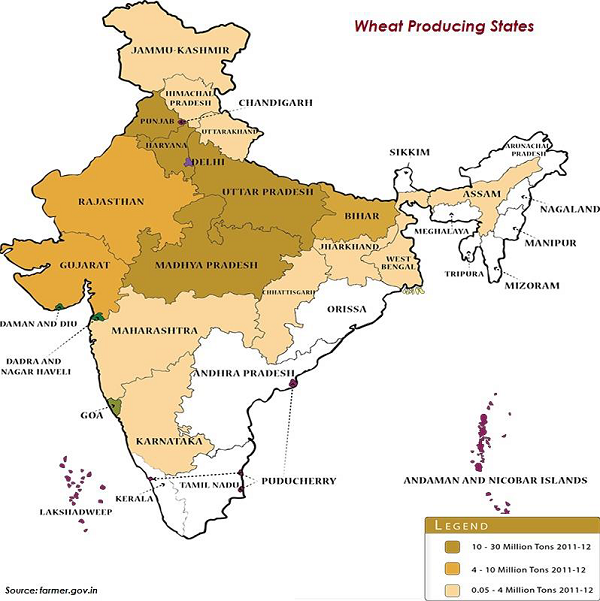
Production
- India is the second-largest producer of wheat with a share of around 14.14 per cent of the world's total production in 2020.
- India produces around 107.59 million tonne of wheat annually while a major chunk of it goes towards domestic consumption.
- China, India, and Russia are the three largest individual wheat producers in the world, accounting for about 41% of the world’s total wheat production.
- The soil and climate of Prairies are the most suitable for the cultivation of wheat and maize. So the production of wheat is so large that USA exports surplus wheat to other countries. Therefore, the Prairies of North America are called 'Wheat basket of the world'.
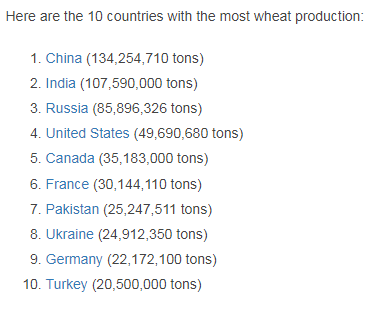
Wheat Exports
- India's wheat exports increased to USD 1.74 billion in April-January 2021-22.
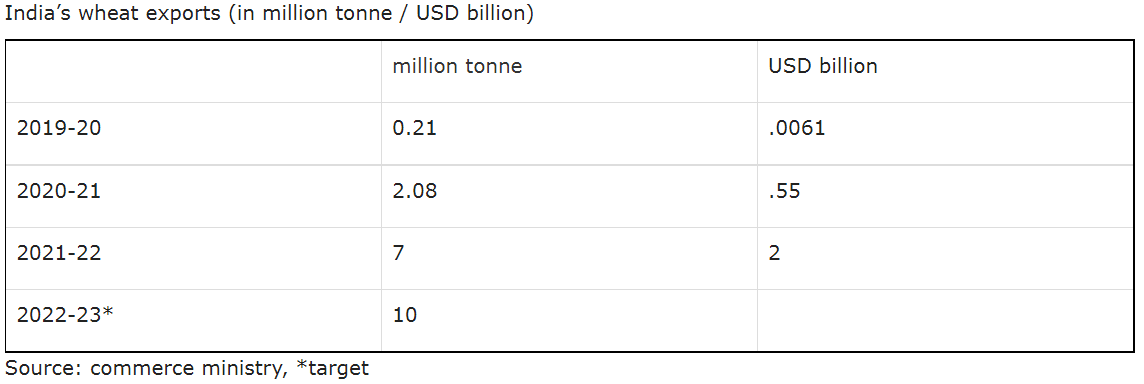
- India's wheat exports are mainly to neighboring countries with Bangladesh having the largest share of more than 54 per cent in both volume and value terms in 2020-21.
- India has entered new wheat markets such as Yemen, Afghanistan, Qatar and Indonesia.
- The top ten countries importing Indian wheat in 2020-21 were Bangladesh, Nepal, the United Arab Emirates, Sri Lanka, Yemen, Afghanistan, Qatar, Indonesia, Oman and Malaysia.
- India accounts for less than 1 per cent in the world's wheat export.
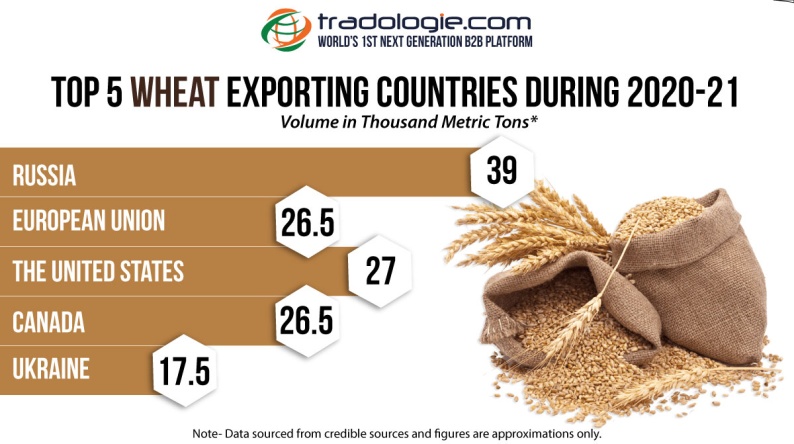
|
The impact of Russia's 2022 invasion of Ukraine on global wheat production
Russia and Ukraine together account for nearly 30% of the global wheat trade. As a result, Russia's 2022 military invasion of the Ukraine sent global wheat prices soaring, with Ukraine's production ability compromised and many countries restricting or shutting down trade relations with Russia. Russia is also a major supplier of fertilizer, which is vital to maximizing crop yields, which adds another layer of complication for farmers.
|
https://www.thehindubusinessline.com/economy/agri-business/egypt-adds-india-as-new-wheat-import-origin-state-news-agency/article65323188.ece

















